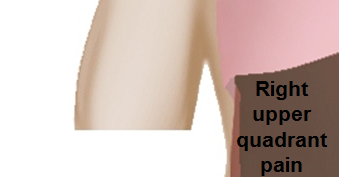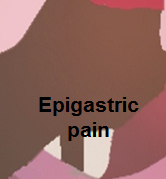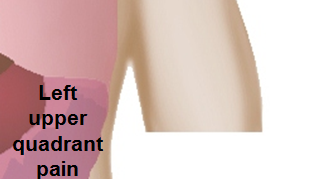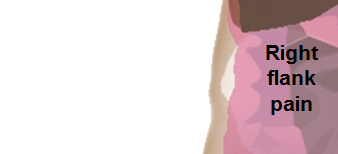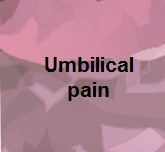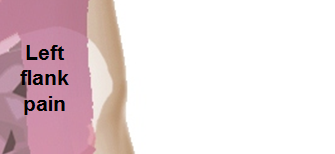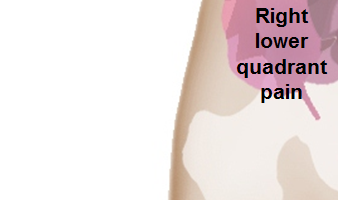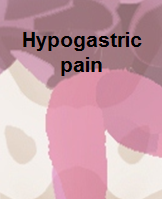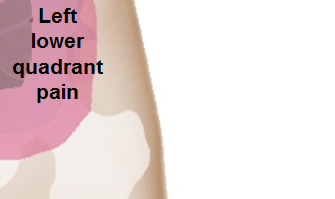Sandbox:Amd: Difference between revisions
Iqra Qamar (talk | contribs) No edit summary |
|||
| Line 282: | Line 282: | ||
|- | |- | ||
| style="padding: 5px 5px; background: #DCDCDC;" align="center" |Gastroparesis | | style="padding: 5px 5px; background: #DCDCDC;" align="center" |Gastroparesis | ||
| style="padding: 5px 5px; background: # | | style="padding: 5px 5px; background: #F5F5F5;" align="center" |Epigastric | ||
| style="padding: 5px 5px; background: #F5F5F5;" align="center" |- | | style="padding: 5px 5px; background: #F5F5F5;" align="center" |- | ||
| style="padding: 5px 5px; background: #F5F5F5;" align="center" |- | | style="padding: 5px 5px; background: #F5F5F5;" align="center" |- | ||
| Line 292: | Line 292: | ||
| style="padding: 5px 5px; background: #F5F5F5;" align="center" |- | | style="padding: 5px 5px; background: #F5F5F5;" align="center" |- | ||
| style="padding: 5px 5px; background: #F5F5F5;" align="center" |Hyperactive/hypoactive | | style="padding: 5px 5px; background: #F5F5F5;" align="center" |Hyperactive/hypoactive | ||
|style="padding: 5px 5px; background: #F5F5F5;" align="left" | | |style="padding: 5px 5px; background: #F5F5F5;" align="left" | | ||
*Hemoglobin | *Hemoglobin | ||
| Line 298: | Line 297: | ||
*Serum total protein, albumin, thyrotropin (TSH), and an antinuclear antibody (ANA) titer | *Serum total protein, albumin, thyrotropin (TSH), and an antinuclear antibody (ANA) titer | ||
*HbA1c | *HbA1c | ||
|style="padding: 5px 5px; background: #F5F5F5;" align="left" | | |||
|style="padding: 5px 5px; background: #F5F5F5;" align="left" |*Scintigraphic gastric emptying | *Scintigraphic gastric emptying | ||
|style="padding: 5px 5px; background: #F5F5F5;" align="left" | | |||
|style="padding: 5px 5px; background: #F5F5F5;" align="left" |*Succussion splash | *Succussion splash | ||
*Single photon emission computed tomography (SPECT) | |||
*Full thickness gastric and small intestinal biopsy | |||
|- | |- | ||
| style="padding: 5px 5px; background: #DCDCDC;" align="center" |[[Gastrointestinal perforation]] | | style="padding: 5px 5px; background: #DCDCDC;" align="center" |[[Gastrointestinal perforation]] | ||
| Line 340: | Line 339: | ||
| style="padding: 5px 5px; background: #F5F5F5;" align="left" |Postgastrectomy | | style="padding: 5px 5px; background: #F5F5F5;" align="left" |Postgastrectomy | ||
|- | |- | ||
! rowspan=" | ! rowspan="10" style="padding: 5px 5px; background: #DCDCDC;" align="center" |Intestinal causes | ||
| colspan="1" rowspan="1" style="padding: 5px 5px; background: #DCDCDC;" align="center" |[[Acute appendicitis]] | | colspan="1" rowspan="1" style="padding: 5px 5px; background: #DCDCDC;" align="center" |[[Acute appendicitis]] | ||
| style="padding: 5px 5px; background: #F5F5F5;" align="center" |Starts in [[epigastrium]], migrates to RLQ | | style="padding: 5px 5px; background: #F5F5F5;" align="center" |Starts in [[epigastrium]], migrates to RLQ | ||
| Line 531: | Line 530: | ||
| style="padding: 5px 5px; background: #F5F5F5;" align="left" | | | style="padding: 5px 5px; background: #F5F5F5;" align="left" | | ||
|- | |- | ||
| style="padding: 5px 5px; background: #DCDCDC;" align="center" |Colon carcinoma | |||
| style="padding: 5px 5px; background: #F5F5F5;" align="center" |Diffuse/localized | |||
| style="padding: 5px 5px; background: #F5F5F5;" align="center" |- | |||
| style="padding: 5px 5px; background: #F5F5F5;" align="center" |- | |||
| style="padding: 5px 5px; background: #F5F5F5;" align="center" |- | |||
| style="padding: 5px 5px; background: #F5F5F5;" align="center" |± | |||
| style="padding: 5px 5px; background: #F5F5F5;" align="center" |+ | |||
| style="padding: 5px 5px; background: #F5F5F5;" align="center" |± | |||
| style="padding: 5px 5px; background: #F5F5F5;" align="center" |- | |||
| style="padding: 5px 5px; background: #F5F5F5;" align="center" |- | |||
| style="padding: 5px 5px; background: #F5F5F5;" align="left" | | |||
* Normal | * Normal | ||
* Hyperactive if obstruction present | * Hyperactive if obstruction present | ||
| style="padding: 5px 5px; background: #F5F5F5;" align="left" | | |||
* CBC | * CBC | ||
* Carcinoembryonic antigen (CEA) | * Carcinoembryonic antigen (CEA) | ||
| style="padding: 5px 5px; background: #F5F5F5;" align="left" | | |||
* Colonoscopy | * Colonoscopy | ||
* Flexible sigmoidoscopy | * Flexible sigmoidoscopy | ||
| Line 590: | Line 588: | ||
| style="padding: 5px 5px; background: #F5F5F5;" align="left" | | | style="padding: 5px 5px; background: #F5F5F5;" align="left" | | ||
|- | |- | ||
| style="padding: 5px 5px; background: #DCDCDC;" align="center" |[[Liver abscess]] | |||
| style="padding: 5px 5px; background: #F5F5F5;" align="center" |RUQ | |||
| style="padding: 5px 5px; background: #F5F5F5;" align="center" |+ | |||
| style="padding: 5px 5px; background: #F5F5F5;" align="center" |+ | |||
| style="padding: 5px 5px; background: #F5F5F5;" align="center" |+ | |||
| style="padding: 5px 5px; background: #F5F5F5;" align="center" |± | |||
| style="padding: 5px 5px; background: #F5F5F5;" align="center" |- | |||
| style="padding: 5px 5px; background: #F5F5F5;" align="center" |+ | |||
| style="padding: 5px 5px; background: #F5F5F5;" align="center" |+ | |||
| style="padding: 5px 5px; background: #F5F5F5;" align="center" |± | |||
| style="padding: 5px 5px; background: #F5F5F5;" align="center" |Normal/hypoactive | |||
| style="padding: 5px 5px; background: #F5F5F5;" align="left" | | |||
* CBC | * CBC | ||
* Blood cultures | * Blood cultures | ||
* Abnormal [[Liver function test|liver function tests]] | * Abnormal [[Liver function test|liver function tests]] | ||
| style="padding: 5px 5px; background: #F5F5F5;" align="left" | | |||
* US | * US | ||
* CT | * CT | ||
| style="padding: 5px 5px; background: #F5F5F5;" align="left" | | |||
|- | |- | ||
| style="padding: 5px 5px; background: #DCDCDC;" align="center" |[[Hepatocellular carcinoma]]/Metastasis | |||
| style="padding: 5px 5px; background: #F5F5F5;" align="center" |RUQ | |||
| style="padding: 5px 5px; background: #F5F5F5;" align="center" |+ | |||
| style="padding: 5px 5px; background: #F5F5F5;" align="center" |- | |||
| style="padding: 5px 5px; background: #F5F5F5;" align="center" |+ | |||
| style="padding: 5px 5px; background: #F5F5F5;" align="center" |- | |||
| style="padding: 5px 5px; background: #F5F5F5;" align="center" |- | |||
| style="padding: 5px 5px; background: #F5F5F5;" align="center" |- | |||
| style="padding: 5px 5px; background: #F5F5F5;" align="center" |- | |||
| style="padding: 5px 5px; background: #F5F5F5;" align="center" |- | |||
| style="padding: 5px 5px; background: #F5F5F5;" align="left" | | |||
* Normal | * Normal | ||
* Hyperactive if obstruction present | * Hyperactive if obstruction present | ||
| style="padding: 5px 5px; background: #F5F5F5;" align="left" | | |||
* High levels of [[Alpha-fetoprotein|AFP]] in serum | * High levels of [[Alpha-fetoprotein|AFP]] in serum | ||
* Abnormal [[Liver function test|liver function tests]] | * Abnormal [[Liver function test|liver function tests]] | ||
| style="padding: 5px 5px; background: #F5F5F5;" align="left" | | |||
* US | * US | ||
* CT | * CT | ||
* Liver biopsy | * Liver biopsy | ||
| style="padding: 5px 5px; background: #F5F5F5;" align="left" | | |||
Other symptoms: | Other symptoms: | ||
* [[Splenomegaly]] | * [[Splenomegaly]] | ||
| Line 738: | Line 736: | ||
! | ! | ||
!Renal causes | !Renal causes | ||
| style="padding: 5px 5px; background: #DCDCDC;" align="center" |Pyelonephritis | |||
| style="padding: 5px 5px; background: #F5F5F5;" align="center" |Lumbar region | |||
| style="padding: 5px 5px; background: #F5F5F5;" align="center" |+ | |||
| style="padding: 5px 5px; background: #F5F5F5;" align="center" |± | |||
| style="padding: 5px 5px; background: #F5F5F5;" align="center" |- | |||
| style="padding: 5px 5px; background: #F5F5F5;" align="center" |- | |||
| style="padding: 5px 5px; background: #F5F5F5;" align="center" |- | |||
| style="padding: 5px 5px; background: #F5F5F5;" align="center" |+ | |||
| style="padding: 5px 5px; background: #F5F5F5;" align="center" |± | |||
| style="padding: 5px 5px; background: #F5F5F5;" align="center" |± | |||
| style="padding: 5px 5px; background: #F5F5F5;" align="center" |Hypoactive | |||
| style="padding: 5px 5px; background: #F5F5F5;" align="left" | | |||
* Urinalysis | * Urinalysis | ||
* Urine culture | * Urine culture | ||
* Blood culture | * Blood culture | ||
| style="padding: 5px 5px; background: #F5F5F5;" align="left" | | |||
* CT | * CT | ||
* MRI | * MRI | ||
| style="padding: 5px 5px; background: #F5F5F5;" align="left" | | |||
*Renal punch positive | |||
|- | |- | ||
! colspan="2" rowspan="4" style="padding: 5px 5px; background: #DCDCDC;" align="center" | Hollow Viscous Obstruction | ! colspan="2" rowspan="4" style="padding: 5px 5px; background: #DCDCDC;" align="center" | Hollow Viscous Obstruction | ||
| Line 985: | Line 984: | ||
* Increased [[tactile fremitus]] | * Increased [[tactile fremitus]] | ||
|- | |- | ||
| colspan="2" style="padding: 5px 5px; background: #DCDCDC;" align="center" |Pulmonary embolism | |||
| style="padding: 5px 5px; background: #F5F5F5;" align="center" |RUQ/LUQ | |||
| style="padding: 5px 5px; background: #F5F5F5;" align="center" |± | |||
| style="padding: 5px 5px; background: #F5F5F5;" align="center" |- | |||
| style="padding: 5px 5px; background: #F5F5F5;" align="center" |- | |||
| style="padding: 5px 5px; background: #F5F5F5;" align="center" |- | |||
| style="padding: 5px 5px; background: #F5F5F5;" align="center" |- | |||
| style="padding: 5px 5px; background: #F5F5F5;" align="center" |± | |||
| style="padding: 5px 5px; background: #F5F5F5;" align="center" |- | |||
| style="padding: 5px 5px; background: #F5F5F5;" align="center" |- | |||
| style="padding: 5px 5px; background: #F5F5F5;" align="center" |N | |||
| style="padding: 5px 5px; background: #F5F5F5;" align="left" | | |||
* ABGs | * ABGs | ||
* D-dimer | * D-dimer | ||
| style="padding: 5px 5px; background: #F5F5F5;" align="left" | | |||
* CXR | * CXR | ||
* V/Q scan | * V/Q scan | ||
* Spiral [[CT pulmonary angiogram]] | * Spiral [[CT pulmonary angiogram]] | ||
| style="padding: 5px 5px; background: #F5F5F5;" align="left" | | |||
|- | |- | ||
! colspan="2" style="padding: 5px 5px; background: #DCDCDC;" align="center" |Pneumonia | ! colspan="2" style="padding: 5px 5px; background: #DCDCDC;" align="center" |Pneumonia | ||
| style="padding: 5px 5px; background: #F5F5F5;" align="center" |RUQ/LUQ | |||
| style="padding: 5px 5px; background: #F5F5F5;" align="center" |+ | |||
| style="padding: 5px 5px; background: #F5F5F5;" align="center" |+ | |||
| style="padding: 5px 5px; background: #F5F5F5;" align="center" |- | |||
| style="padding: 5px 5px; background: #F5F5F5;" align="center" |- | |||
| style="padding: 5px 5px; background: #F5F5F5;" align="center" |- | |||
| style="padding: 5px 5px; background: #F5F5F5;" align="center" |+ | |||
| style="padding: 5px 5px; background: #F5F5F5;" align="center" |- | |||
| style="padding: 5px 5px; background: #F5F5F5;" align="center" |- | |||
| style="padding: 5px 5px; background: #F5F5F5;" align="center" |N/Hypoactive | |||
| style="padding: 5px 5px; background: #F5F5F5;" align="left" | | |||
* ABGs | * ABGs | ||
* Eosinophilia | * Eosinophilia | ||
* Pancytopenia | * Pancytopenia | ||
| style="padding: 5px 5px; background: #F5F5F5;" align="center" | | |||
* CXR | * CXR | ||
* CT chest | * CT chest | ||
* Bronchoscopy | * Bronchoscopy | ||
| style="padding: 5px 5px; background: #F5F5F5;" align="center" | | |||
|- | |- | ||
! style="padding: 5px 5px; background: #DCDCDC;" align="center" |Cardiovascular disorders | ! style="padding: 5px 5px; background: #DCDCDC;" align="center" |Cardiovascular disorders | ||
Revision as of 19:49, 28 November 2017
Editor-In-Chief: C. Michael Gibson, M.S., M.D. [1]; Associate Editor(s)-in-Chief: Amandeep Singh M.D.[2]
Differential diagnosis
Abbreviations: RUQ= Right upper quadrant of the abdomen, LUQ= Left upper quadrant, LLQ= Left lower quadrant, RLQ= Right lower quadrant, LFT= Liver function test, SIRS= Systemic inflammatory response syndrome, ERCP= Endoscopic retrograde cholangiopancreatography, IV= Intravenous, N= Normal, AMA= Anti mitochondrial antibodies, LDH= Lactate dehydrogenase, GI= Gastrointestinal, CXR= Chest X ray, IgA= Immunoglobulin A, IgG= Immunoglobulin G, IgM= Immunoglobulin M, CT= Computed tomography, PMN= Polymorphonuclear cells, ESR= Erythrocyte sedimentation rate, CRP= C-reactive protein, TS= Transferrin saturation, SF= Serum Ferritin, SMA= Superior mesenteric artery, SMV= Superior mesenteric vein, ECG= Electrocardiogram
| ||||||||||||||||||||||||||||||||||||||||||||||||||||||||||||||||||||||||||||||||||||||||||||||||||||||||||||||||||||||||||||||||||||||||||||||||||||||||||||||||||||||||||||||||||||||||||||||||||||||||||||||||||||||||||||||||||||||||||||||||||||||||||||||||||||||||||||||||||||||||||||||||||||||||||||||||||||||||||||||||||||||||||||||||||||||||||||||||||||||||||||||||||||||||||||||||||||||||||||||||||||||||||||||||||||||||||||||||||||||||||||||||||||||||||||||||||||||||||||||||||||||||||||||||||||||||||||||||||||||||||||||||||||||||||||||||||||||||||||||||||||||||||||||||||||||||||||||||||||||||||||||||||||||||||||||||||||||||||||||||||||||||||||||||||||||||||||||||||||||||||||||||||||||||||||||||||||||||||||||||||||||||||||||||||||||||||||||||||||||||||||||||||||||||||
